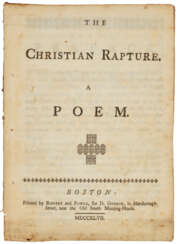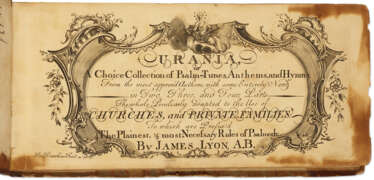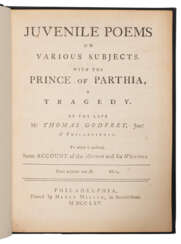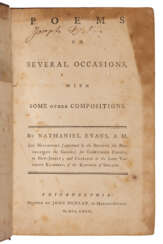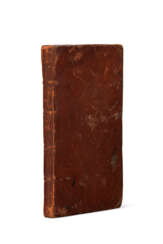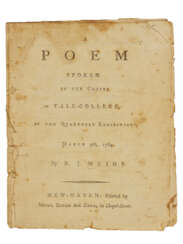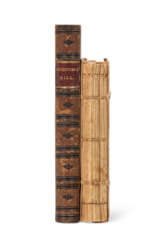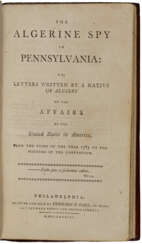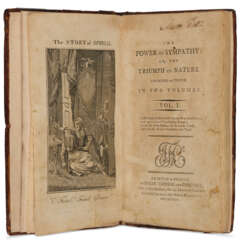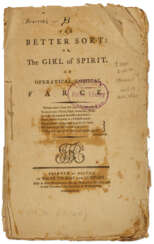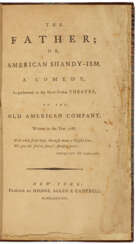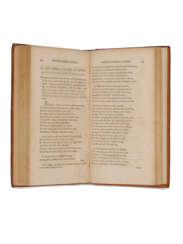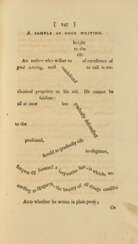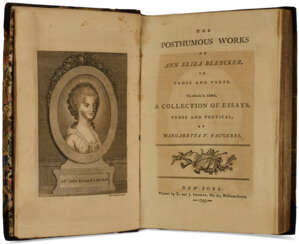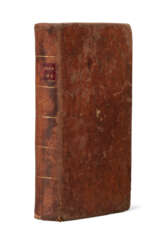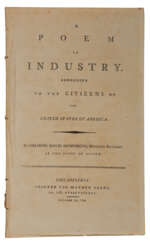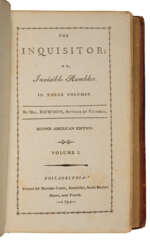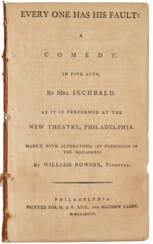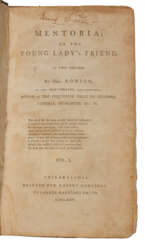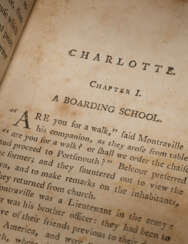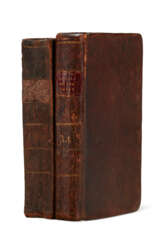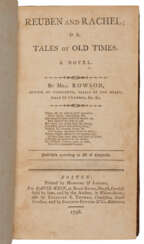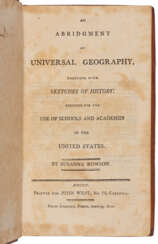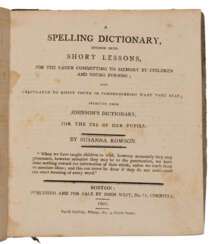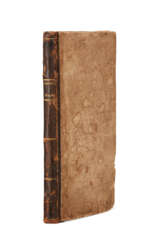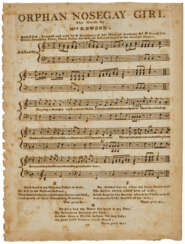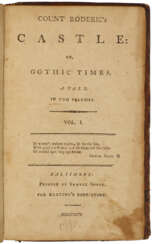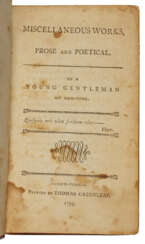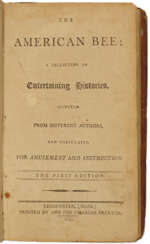
Printed books — The Bruce M. Lisman Collection of Important American Literature: Part Two
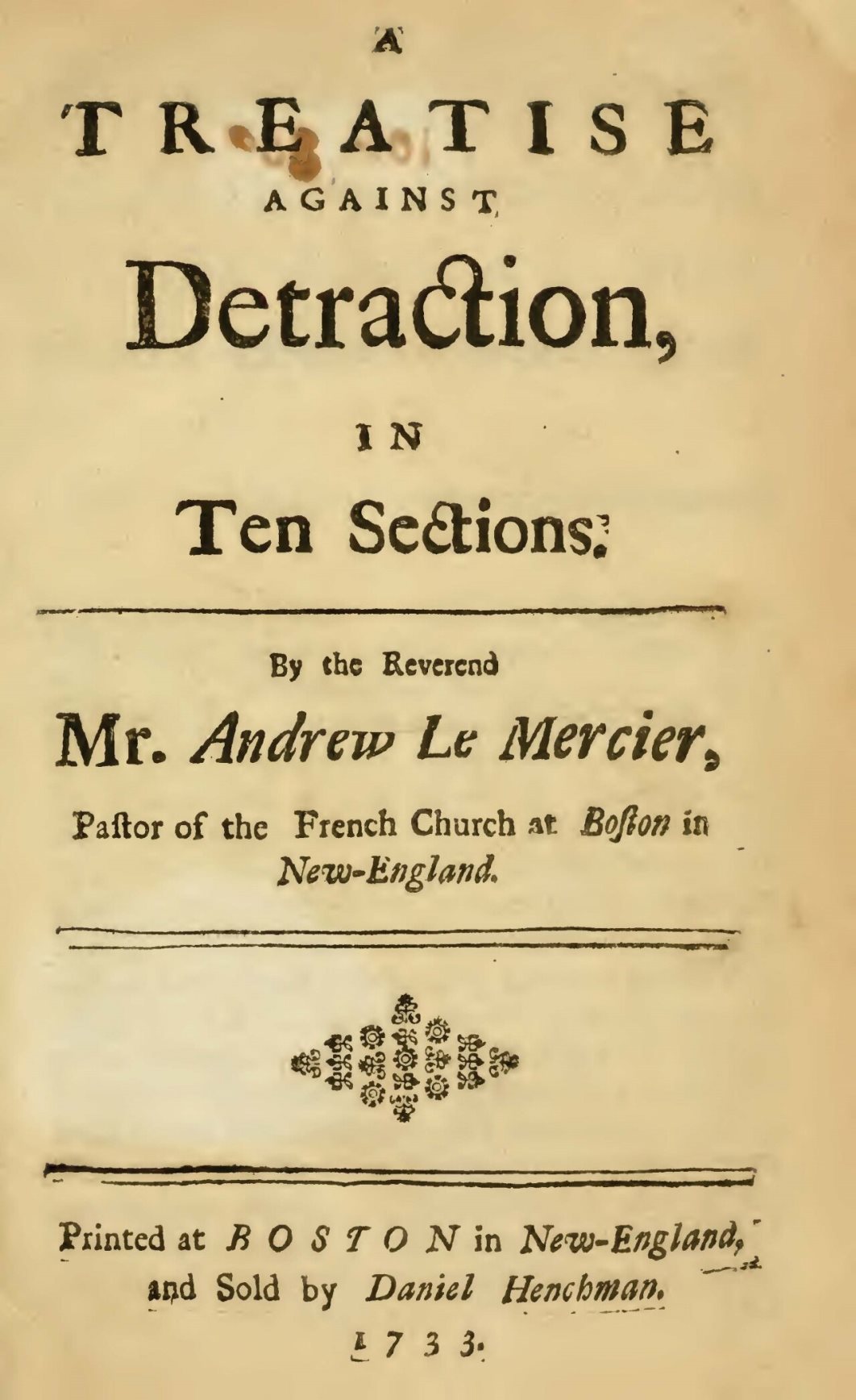
Andrew Le Mercier was a clergyman, pastor of the French Huguenot Church in Boston in the 18th century, and writer.
Le Mercier completed his ecclesiastical training at the Geneva Academy and in 1716 arrived in Boston (Massachusetts Bay, then an English colony) and began working as a pastor. He was active in establishing a settlement for shipwrecked men on the infamous Sable Island. The pastor also sent provisions there, which saved many lives.
Andrew Le Mercier wrote The Ecclesiastical History of Geneva in Five Books, with a Political and Geographical Description of that Republic (Boston, 1732) and A Treatise Against Diminution (1733).
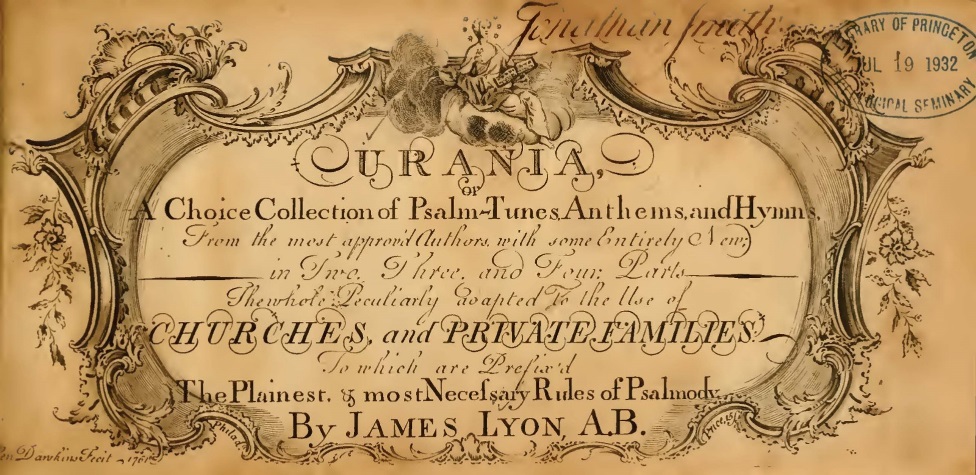
James Lyon was a clergyman and one of the first American composers.
James Lyon was one of the few composers in mid-eighteenth-century America. He earned a master's degree from the College of Philadelphia and became a Presbyterian minister. He is known to have begun writing music while still a student. While living in Philadelphia, Lyon published his Urania, or Select Collection of Psalms, Hymns, and Anthems, in 1761. It contained many English tunes as well as six original pieces by Lyon. Lyon is believed to be the author of the tune that eventually became the song "America (My Country 'Tis of Thee)."
He served the Congregational Church in Machias, Maine from 1771 until his death in 1794. James Lyon was an ardent and active patriot and even made George Washington a detailed proposal to conquer Nova Scotia.
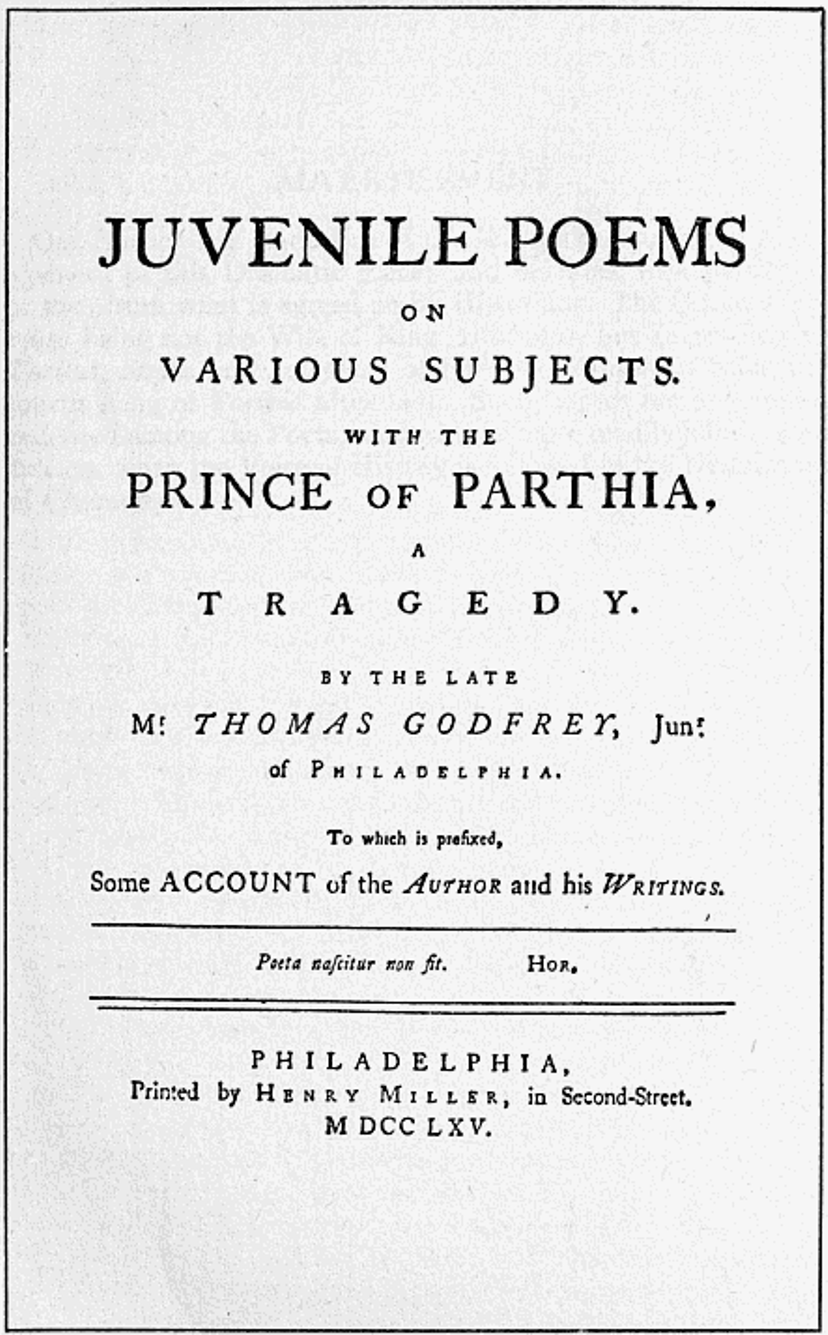
Thomas Godfrey, Jr. was an American poet and playwright.
Thomas Godfrey's father was the inventor of the quadrant and one of the first members of the American Philosophical Society, organized by Benjamin Franklin. Having been home educated and graduated from the Philadelphia Academy, the young Godfrey was first interested in painting, but soon switched to poetry.
Thomas Godfrey lived only 26 years, but left a bright mark in the history of the young country. He managed to write a play-tragedy about ancient times, "The Parthian Prince", which was published in the United States after his death, in 1765. It was staged by an American troupe in Philadelphia on April 24, 1767. This play was significant in that it was the first play written by a native-born American and staged by professionals.
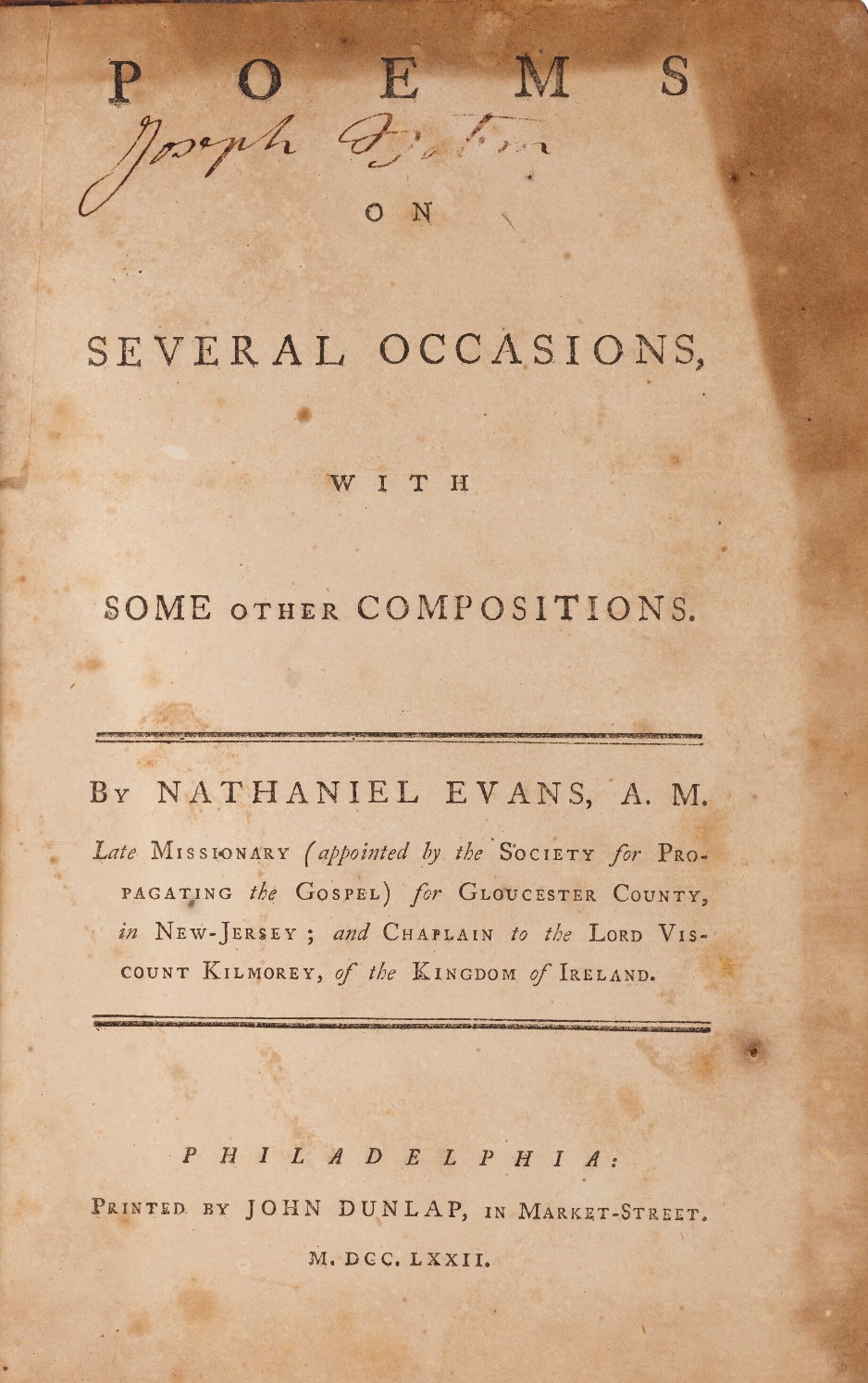
Nathaniel Evans was an American colonial clergyman and poet.
Evans was born in Philadelphia in the family of a merchant, graduated from the William Smith Academy in that city. In 1765 he received a master's degree from the University of Pennsylvania. In the same year he edited a collection of poems by his friend Thomas Godfrey. He also organized churches in Waterford and Gloucester, New Jersey.
Nathaniel Evans died of tuberculosis after living only 25 years, so his poetic talent remained undiscovered. But from a collection of a few of his poems published in 1772, we can tell that his mind was of a fine and refined stock, and his imagination was vivid.
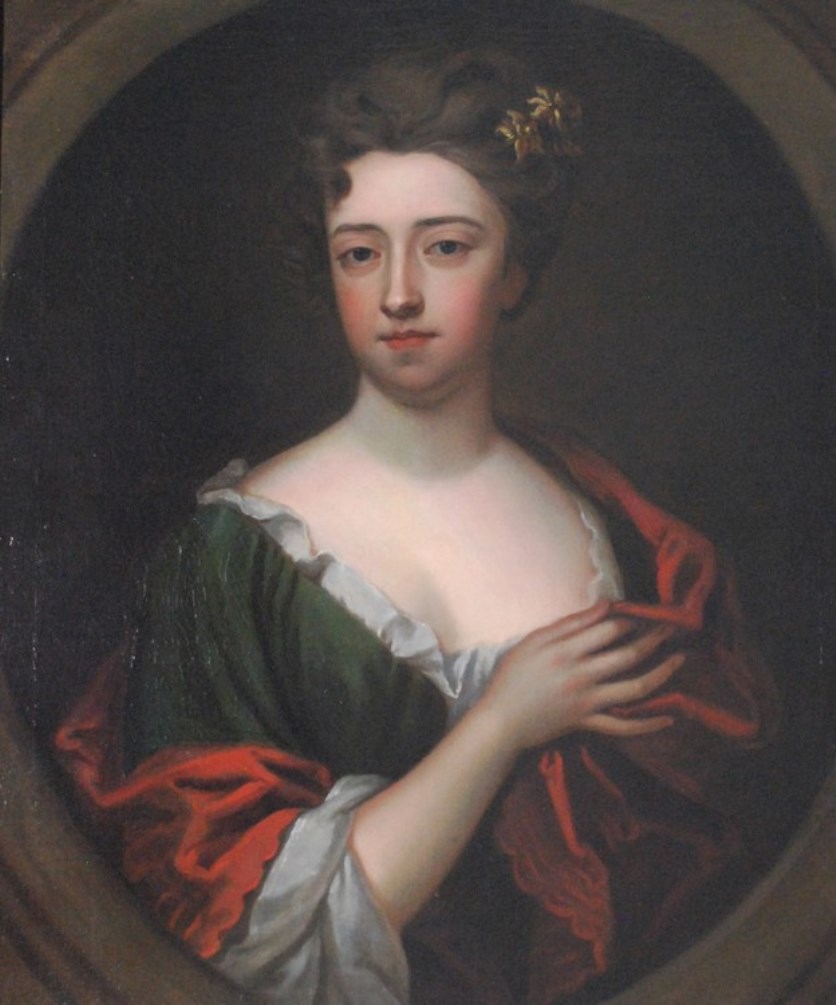
Elizabeth Graeme Fergusson or Betsy Graeme was an American colonial writer and poet.
Elizabeth Graeme was born and raised in a wealthy and influential Philadelphia family. In 1764-65, she traveled to London, where she met several leading literary and scientific figures. She soon established something of a literary salon at her native Graeme Park Manor.
Elizabeth Fergusson left few literary works other than a translation of The Adventures of Telemac from the French and a long poem on female suffering, The Abandoned Wife. She is remembered more for her letters and actions during the American War of Independence (1775-83), in which her family suffered considerably. Her husband Henry H. Fergusson was arrested and outlawed, and Graeme Park was confiscated at the end of the war.
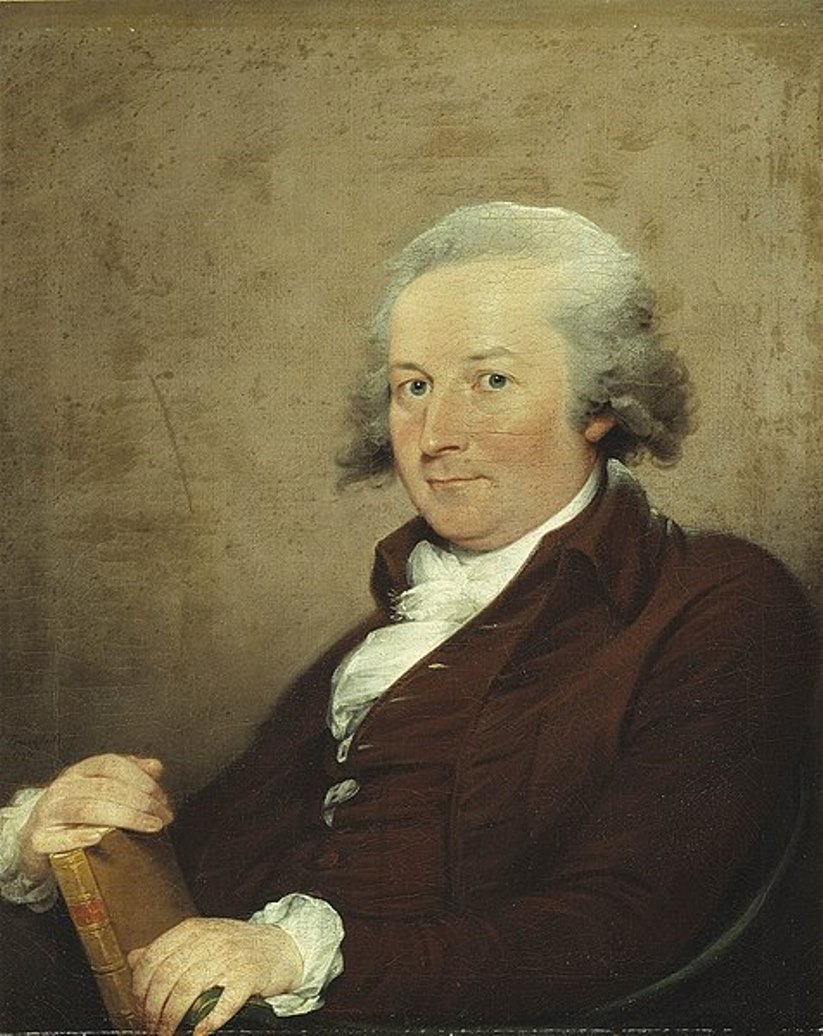
John Trumbull is an American writer poet-satirist.
He studied law at Yale University, worked as a tutor and wrote poetry and essays, and was a leader of the satirical group The Hartford Witters. In his satirical poems Trumbull ridiculed, among other things, the educational system of his day, and he gained fame for his satirical epic poem on the American Revolution, M'Fingal (1775-82), which focused on the ineptitude of the British during the War of Independence.
John Trumbull later served as state's attorney in 1789 and then as a state legislator and judge until 1819. In 1791, he was elected a member of the American Academy of Arts and Sciences.
John Trumbull is a third cousin of the painter John Trumbull (1756-1843).
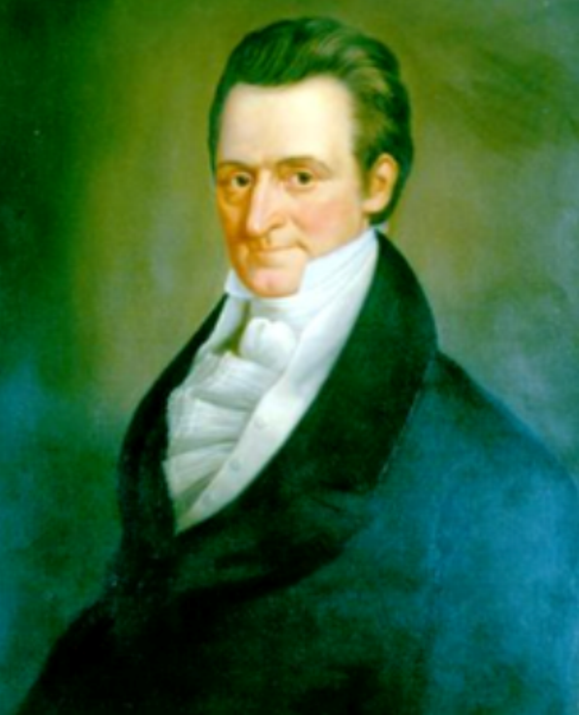
Return Jonathan Meigs, Jr. was a politician, Democrat, Republican, and poet.
Meigs was the son of Jonathan Meigs Sr. (1734-1823), a colonel in the Continental Army during the American War of Independence, graduated from Yale University, where he studied law, and had a colorful political career primarily in Ohio.
In 1798 Meigs was appointed judge of the Northwest Territory and the following year was elected to the territorial legislature. When Ohio became a state in 1803, he became chief justice of the Ohio Supreme Court. Meigs served as senator 1808 to 1810; he was governor of Ohio from 1810 to 1814. Meigs County, Ohio, and Fort Meigs in Perrysburg, Ohio, are named in his honor.
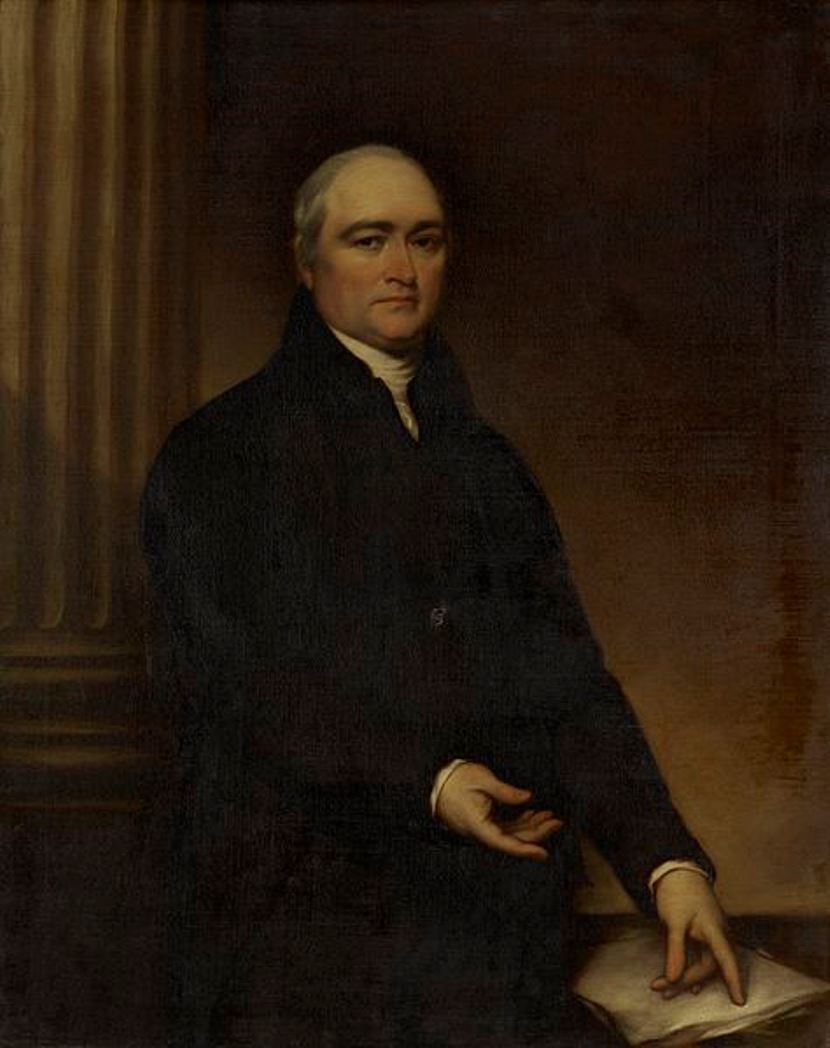
Timothy Dwight IV was an American clergyman, teacher, author, and satirical poet.
Dwight was the eldest son of farmer and merchant Timothy Dwight III. He graduated from Yale University, was a schoolmaster, a Massachusetts state legislator, and a chaplain in the Continental Army. In 1783 he opened a successful school in Greenfield Hill, Connecticut, where he became pastor of the Congregational Church.
In Connecticut, Dwight began writing poetry, such as Greenfield Hill (1794), and epics, including The Conquest of Canaan (1785), an allegory of the conquest of Connecticut from the British. His works are characterized by moralizing and moralizing. Dwight was also the author of political satire, as well as a verse satire on Voltaire, "The Triumph of Infidelity." He and his brother Theodore were members of a group of writers known as the Hartford Witters, centered around Yale University.
From 1795 to 1817. Dwight served as president of Yale University and was extremely influential in modernizing the curriculum. He was an active and eloquent professor of theology; his sermons were published in Theology; Explanation and Defense, 5 volumes (1818-19).
Dwight was also a member of the American Academy of Arts and Sciences and an early member of the American Antiquarian Society.
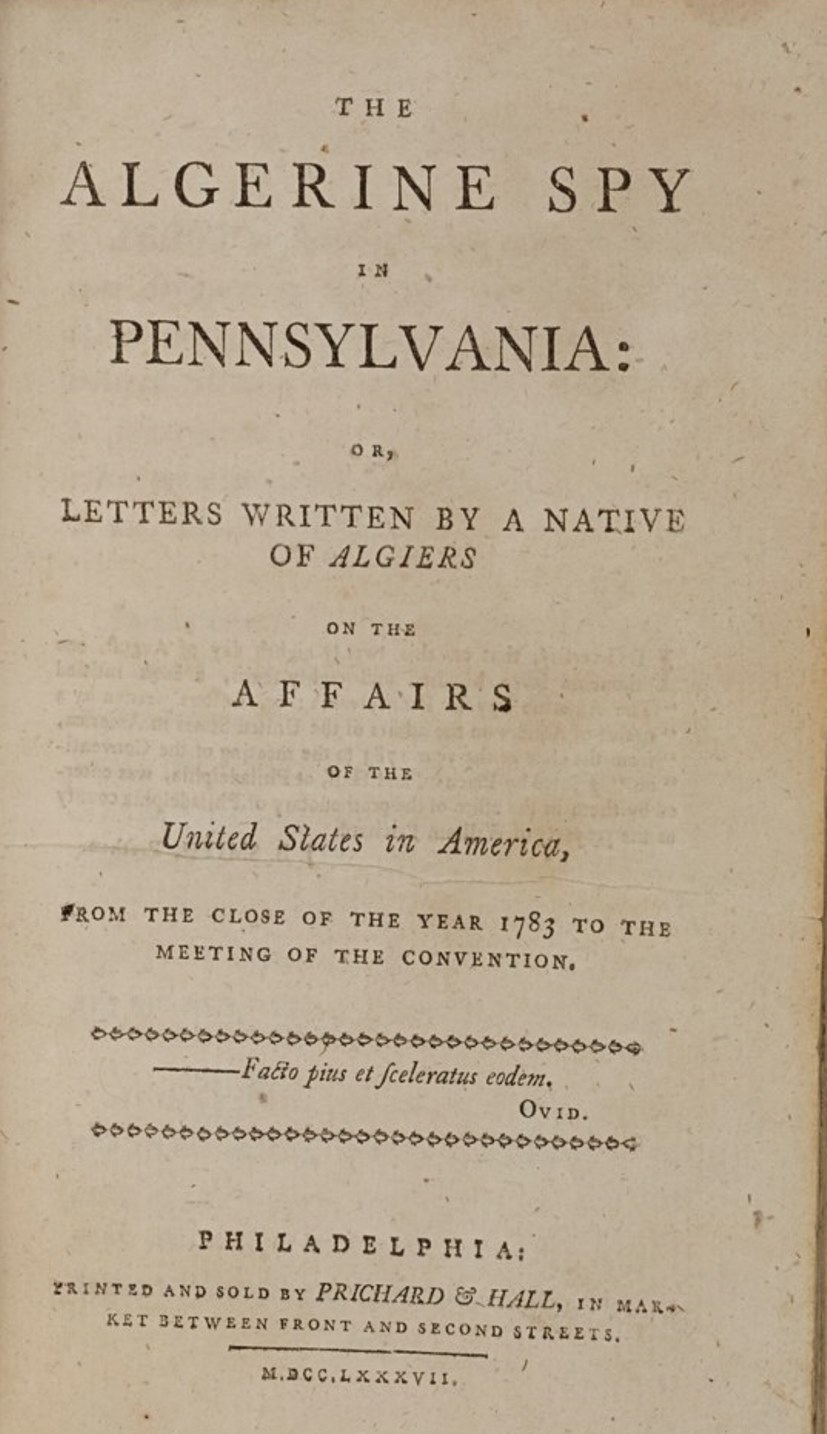
Peter Markoe is an American writer and playwright from Philadelphia.
Peter Markoe is the author of the first American spy novel and generally one of the earliest American novels, The Algerine Spy in Pennsylvania, published in 1787.
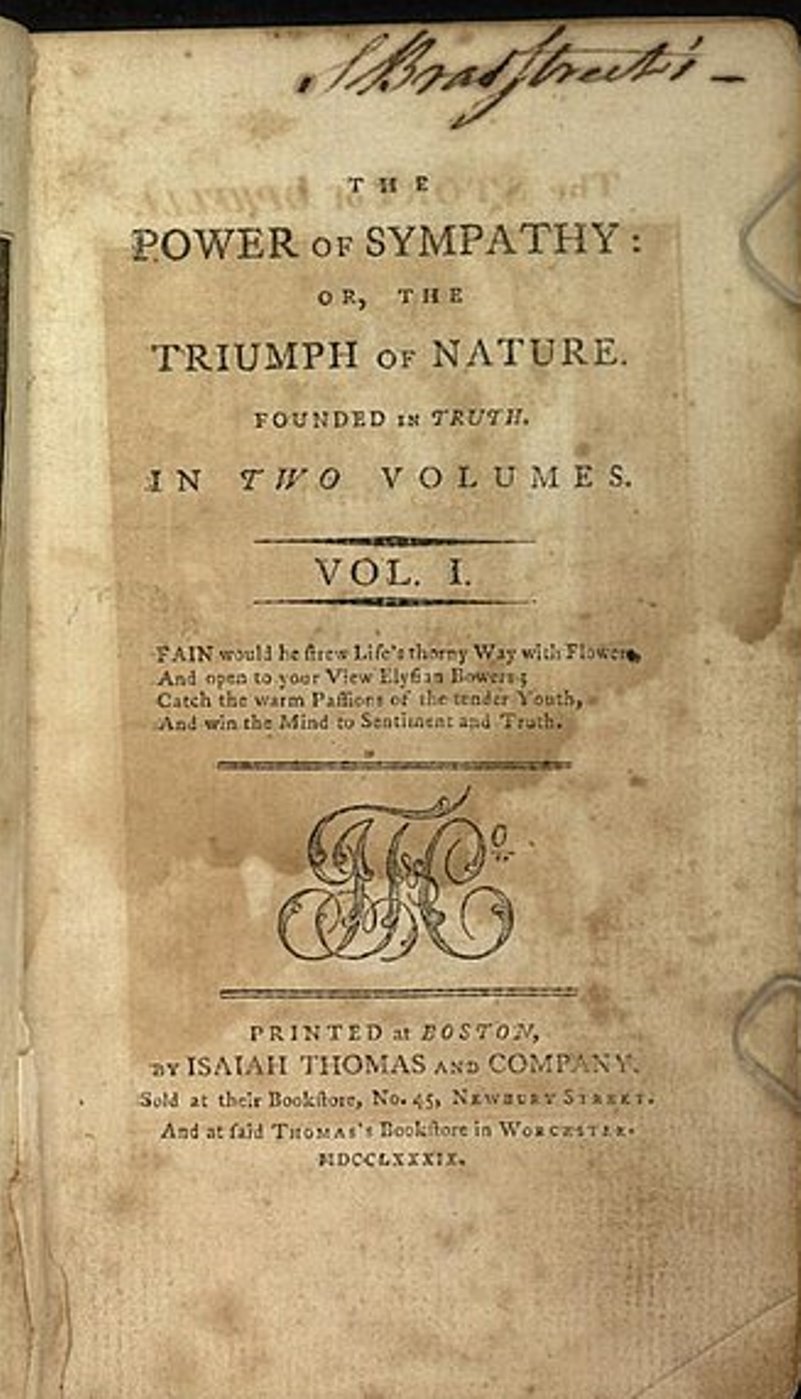
William Hill Brown was an 18th-century American novelist writer.
Brown apparently believed that one of the main purposes of literature was to instill some moral values. It is on this conviction that his novel The Power of Sympathy, or The Triumph of Truth-Based Nature (1789), which is considered the first American novel, is built. It caused a great scandal, however, because it is based on a real-life gruesome story of kidnapping, accidental incest, and suicide.
This novel is a prime example of the American approach to the European genre of the epistolary novel, but with lush descriptions of landscapes and a frank discussion of American slavery. This book can also be considered one of the first explicitly American works of literary criticism, containing lengthy reflections on the nature and purpose of literature and its role in moral formation, especially for women. The popularity of this work initiated the creation of many sentimental novels in the United States.
During his short life, Brown also wrote the romantic novel Harriot, or Domestic Reconciliation (1789), the play West Point Preserved (1797), a tragedy about the death of a Revolutionary spy, a series of verse fables, the West Indies-style comedy Penelope, and a second short novel about incest and seduction, Ira and Isabella.

William Hill Brown was an 18th-century American novelist writer.
Brown apparently believed that one of the main purposes of literature was to instill some moral values. It is on this conviction that his novel The Power of Sympathy, or The Triumph of Truth-Based Nature (1789), which is considered the first American novel, is built. It caused a great scandal, however, because it is based on a real-life gruesome story of kidnapping, accidental incest, and suicide.
This novel is a prime example of the American approach to the European genre of the epistolary novel, but with lush descriptions of landscapes and a frank discussion of American slavery. This book can also be considered one of the first explicitly American works of literary criticism, containing lengthy reflections on the nature and purpose of literature and its role in moral formation, especially for women. The popularity of this work initiated the creation of many sentimental novels in the United States.
During his short life, Brown also wrote the romantic novel Harriot, or Domestic Reconciliation (1789), the play West Point Preserved (1797), a tragedy about the death of a Revolutionary spy, a series of verse fables, the West Indies-style comedy Penelope, and a second short novel about incest and seduction, Ira and Isabella.
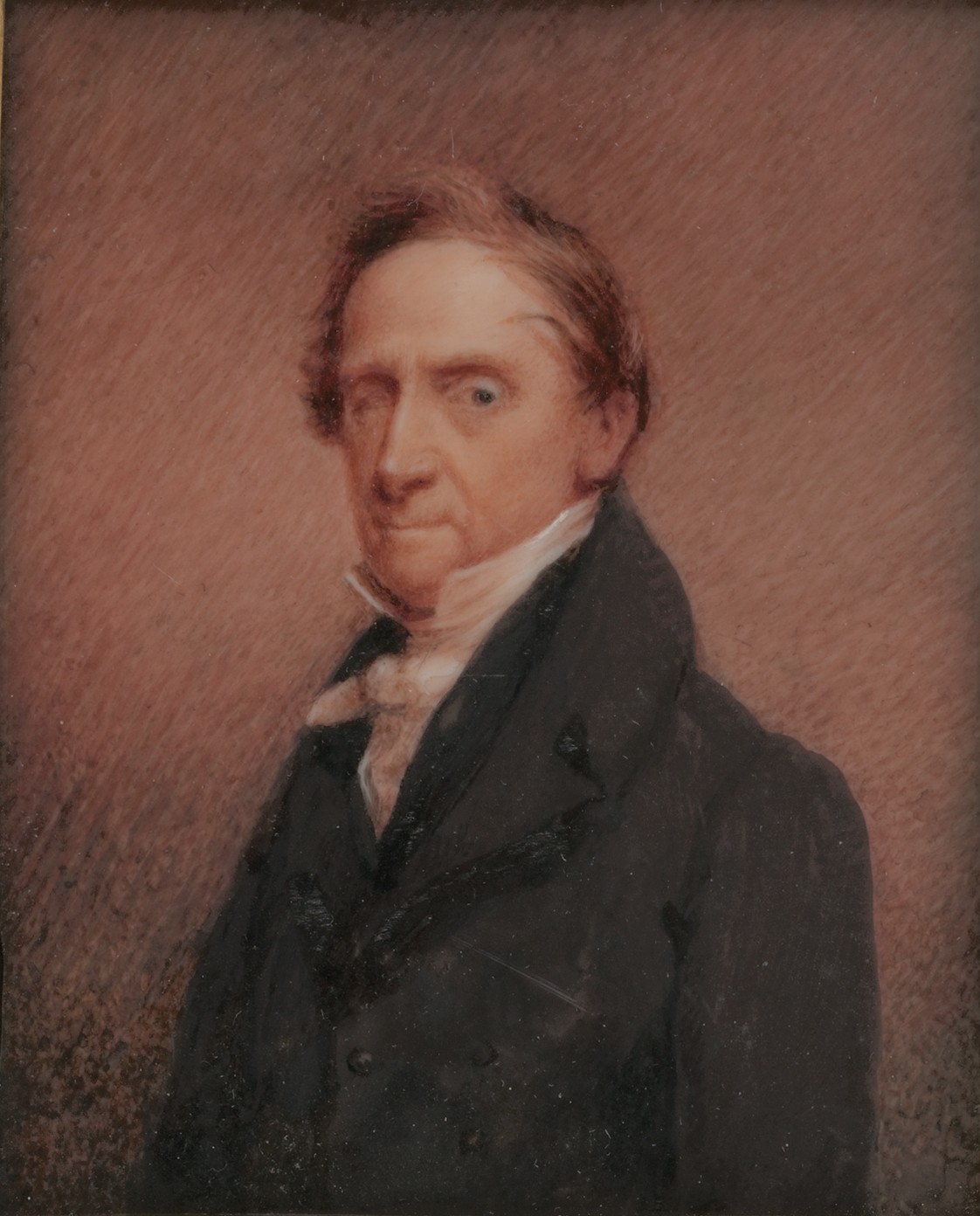
William Dunlap was an American playwright, theater director, artist, and historian.
William Dunlap was a pioneer of the young country's theater. He directed two of New York City's earliest and most famous theaters, the John Street Theater and the Theater in the Park. During his lifetime he directed over sixty plays, most of which were adaptations or translations of French and German works. But among them were some original ones based on American themes with American characters.
In 1832 Dunlap published A History of the American Theater in two volumes. In 1825, Dunlap co-founded the National Academy of Design and taught at its school. Even today, Dunlap is best known for his encyclopedic three-volume History of the Origin and Progress of the Art of Design in the United States. The book was published in 1834 and is now an invaluable source of information about artists, collecting, and artistic endeavors in the country of that historical period.
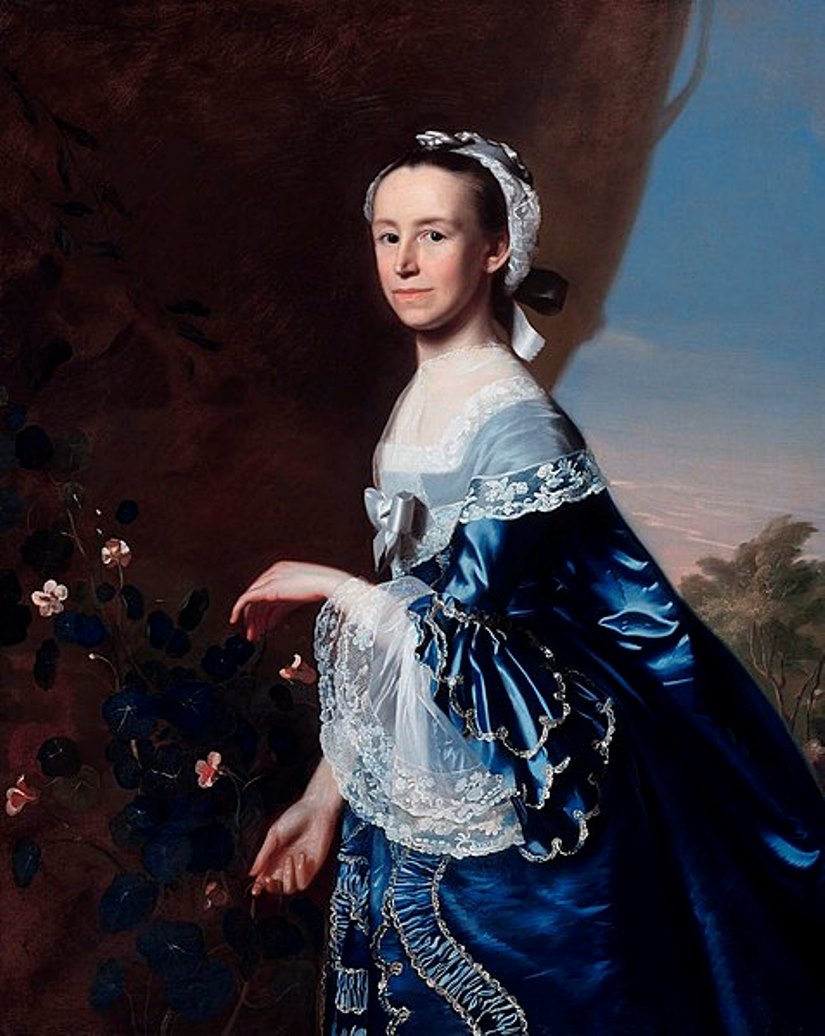
Mercy Otis Warren was an American poet, satirist, playwright, historian, and essayist of the American Revolution.
Mercy Otis was born into a prosperous Cape Cod Island family and was immersed early in the tumultuous political events taking place in the country at the time. One of her brothers was political activist James Otis, who was involved in the American Revolution from the beginning. In 1754, Mercy Otis married farmer James Warren, who later served in the Massachusetts legislature (1766-78). Through her husband's political connections, Warren was personally acquainted with most of the leaders of the Revolution and was constantly at the center of events for more than two decades.
Combining her own convictions with her writing talent, Warren became a poet and historian of the revolutionary era. Her first incisive and polemical pieces in verse were published in a Boston newspaper. This was followed by the prophetic novel Defeat and other works. In 1790 she published a collection of her works, Poems, Dramatic and Miscellaneous, which included two new plays, The Sack of Rome and The Ladies of Castille. For a woman of the time, such publications were very daring, as female writers usually hid under pseudonyms.
Warren also corresponded extensively with politicians, including George Washington and Thomas Jefferson. In 1805, she completed a three-volume work entitled A History of the Rise, Progress, and Termination of the American Revolution. This book was the earliest work on historical events in the country. Its proximity to political leaders and major national events makes Mercy Warren's writings on the American Revolutionary period especially valuable.
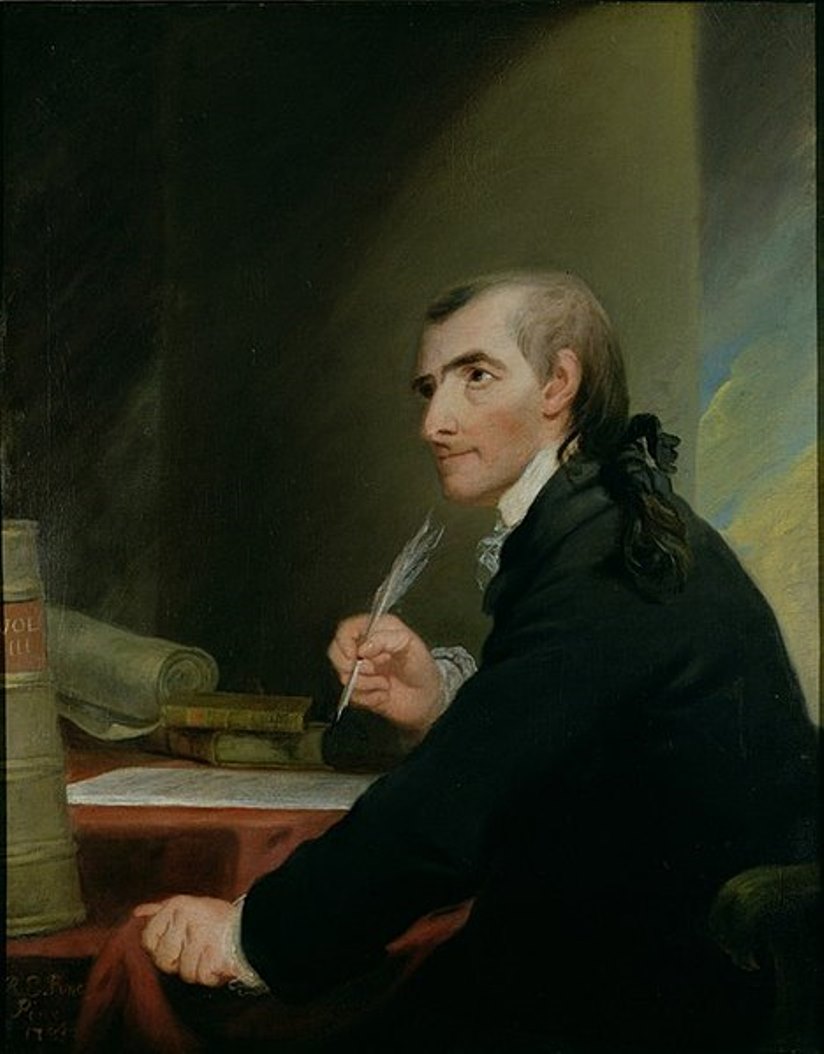
Francis Hopkinson was an American politician, member of the Continental Congress, lawyer, writer and composer.
Hopkinson was educated at Philadelphia College and studied law and was admitted to the bar. In 1774 Hopkinson was appointed a member of the governor's council, and in 1776 he represented New Jersey in the Continental Congress and signed the Declaration of Independence. He was a judge of the Pennsylvania admiralty court from 1779 to 1789 and then served as U.S. District Judge for eastern Pennsylvania until his death.
Hopkinson is credited as one of the designers of the Flag of the United States as well as continental paper bills. As an artist, he designed the seal of the American Philosophical Society, the seal of the State of New Jersey, and the seals of various departments of the U.S. government.
In addition to politics, Hopkinson dabbled in the arts: he played the harpsichord and composed music, and wrote poetry and essays. During the Revolution, he mocked the British and their Loyalist supporters in witty political satires. After the Revolution, he maintained an active correspondence with Benjamin Franklin, George Washington, and Thomas Jefferson.
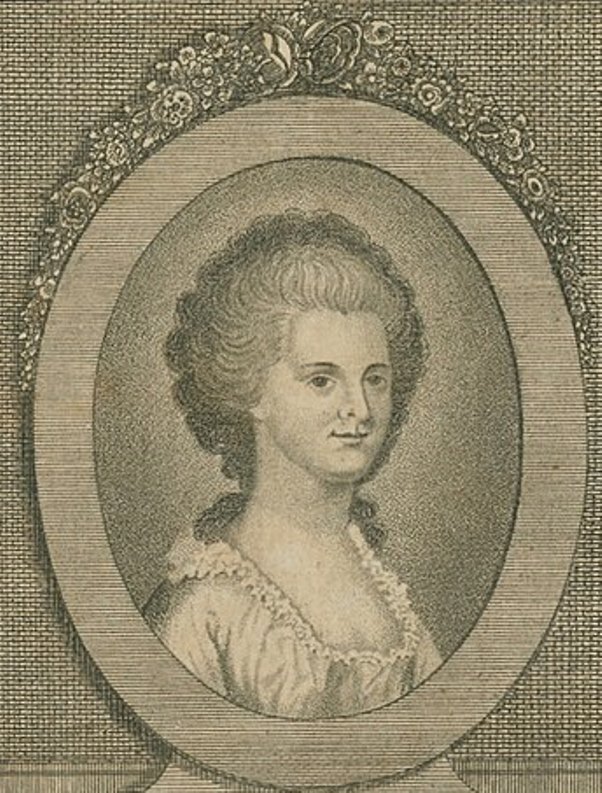
Ann Eliza Bleecker, née Schuyler, is an American poet and writer.
Ann from a young age surprised others with her poetic and literary talent. Married to lawyer John James Bleecker, she continued to write sentimental poems and so-called letters in which she enclosed her compositions. The family idyll was disrupted with the onset of the British offensive during the American Revolution. Ann and her husband had to flee, they experienced much grief and loss. All this greatly affected the character and creativity of Ann Bleecker.
In her most famous fiction narrative "The Story of Maria Kittle", which is addressed to her cousin, Ann describes the hardships of surviving captivity with the cruel Native Americans.
Ann Eliza Bleecker died at the age of 32, leaving behind manuscripts of poetry and prose that she never intended to publish. A few years later, her daughter, the poet Margaret Foger, published a significant portion of Bleeker's work, including twenty-three letters, thirty-six poems, and "The History of Maria Kittle," first in The New-York Magazine in 1790 and 1791, and then in a collection entitled "The Posthumous Works of Anne Eliza Bleecker" in 1793. "The History of Mary Kittle" was reprinted separately in 1797, a testament to the novel's popularity.
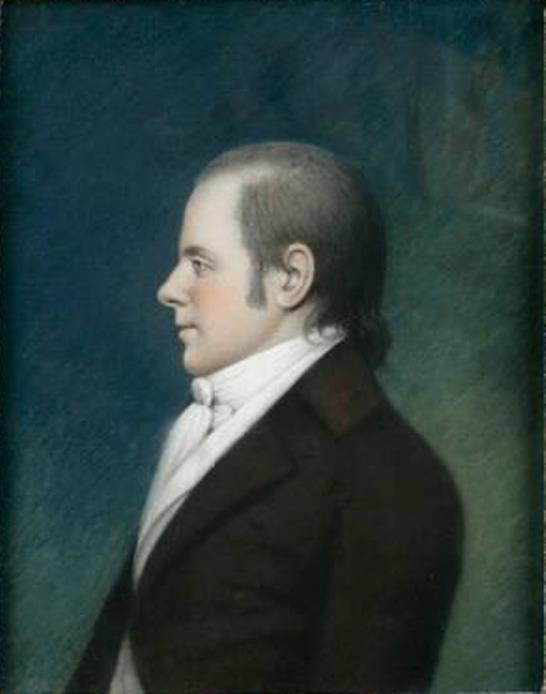
Elihu Hubbard Smith is an American author, writer, and physician.
Smith graduated from Yale College as early as age 11 with a liberal arts education, followed by a medical degree. He worked at New York Hospital and published historical articles on plague and plague fevers.
Elihu Smith was a very active writer: he was a member of the Hartford Witters, wrote the first American comic opera "Edwin and Angelina" (1796), was the editor of the first book anthology of American poetry ("American Poems, Selected and Original," 1793) and the first national American medical journal ("Medical Repository"), and corresponded extensively with many writers and writers of his time.
Smith died at age 27 of yellow fever, which he contracted while treating patients during an outbreak in New York City.
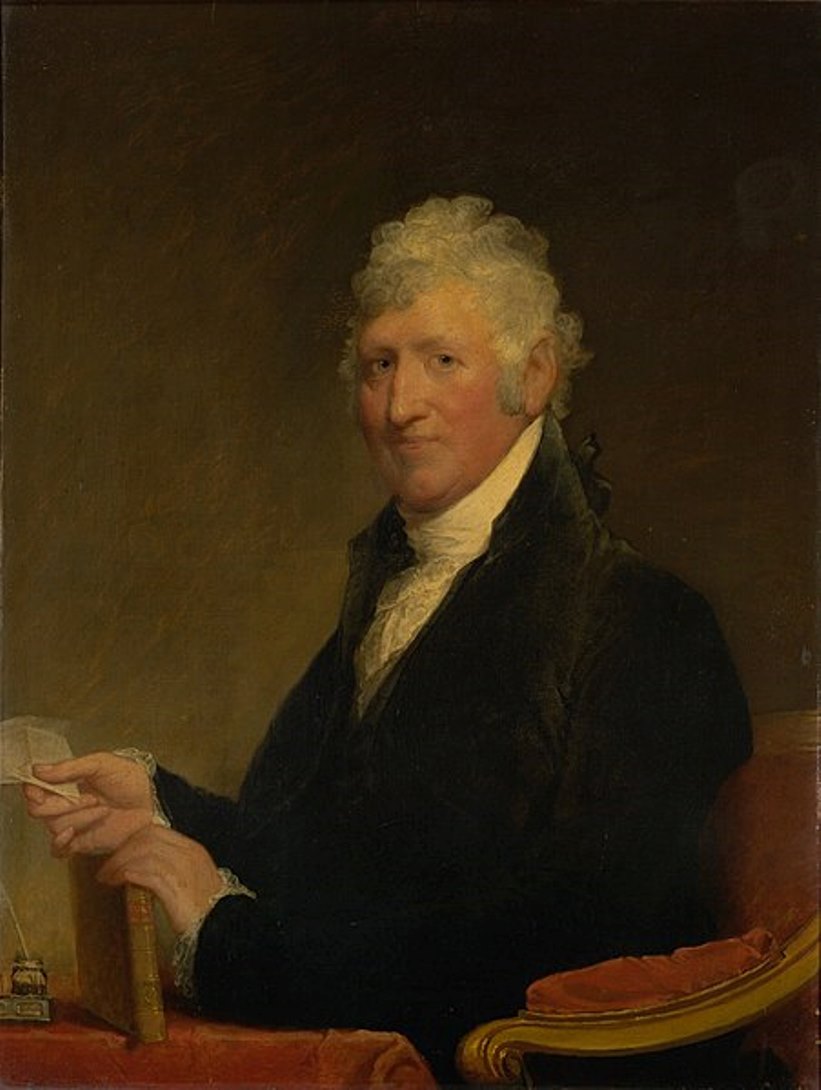
David Humphreys was an American soldier, statesman, diplomat, writer, poet, and biographer.
He received his bachelor's degree from Yale University, where he became a member of the Hartford Witters and taught, and went to serve in the Continental Army in the summer of 1776.
A close friend and aide to George Washington, Humphreys was an eyewitness and active participant in the early years of the United States. During his long career, Col. David Humphreys served as a soldier, secretary, diplomat, and was a writer, poet, orator, biographer, and industrialist. His speeches, poems, literary works, and correspondence with Washington and others of the founding generation serve as a valuable source for historians of the early republic in the late eighteenth and early nineteenth centuries.
Because of his intelligence and diligence, David Humphreys had a long record of service and held many public offices, among others serving as U.S. minister to Spain from 1797 to 1801. He was a member of the Royal Society of London and the American Antiquarian Society.
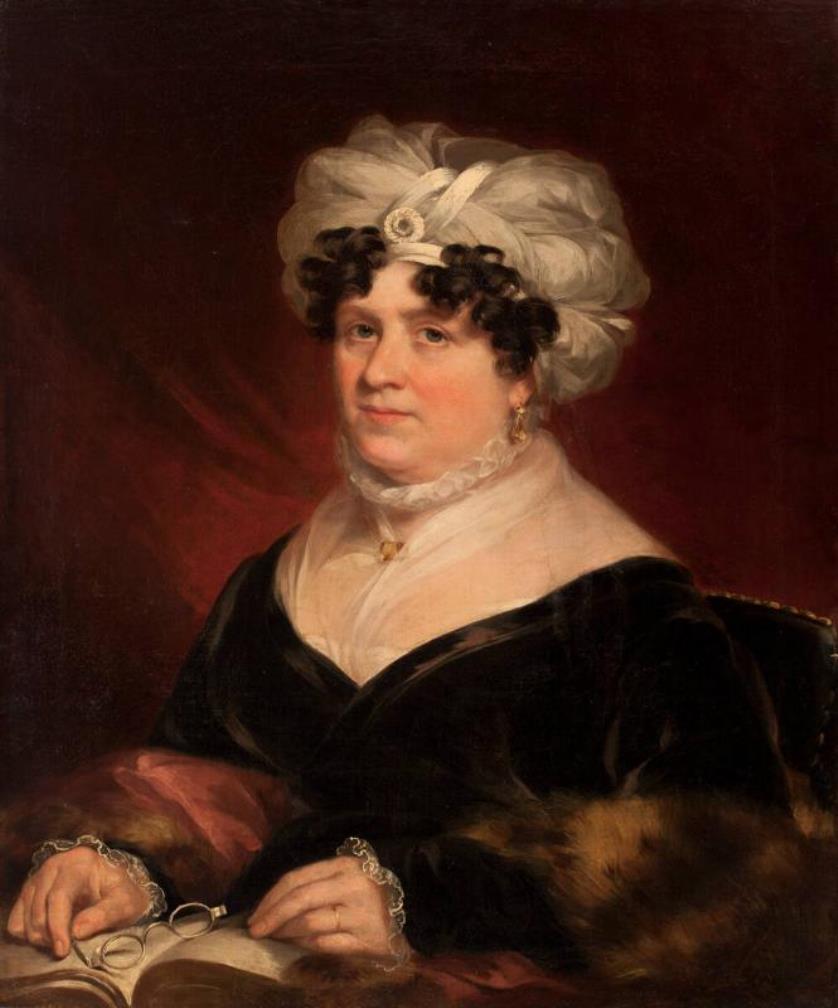
Susanna Rowson, née Haswell, was an American writer and poet, playwright, actress, and educator.
Susanna Haswell was the daughter of an officer in the Royal Navy. She published her first novel, Victoria, in 1786 and soon married businessman William Rowson. Susanna's greatest success was her first American bestseller, the novel Charlotte, A Tale of Truth (1791, in later editions under the title Charlotte Temple). This novel, a conventional sentimental story of seduction and remorse, was immensely popular and went through more than 200 editions.
In 1792 she became an actress and performed with her bankrupt husband in Scotland, as well as in Philadelphia, Baltimore, and Boston. In 1797, after retiring from the stage, Susanna opened the first "female academy" in Boston. Susanna Rowson also wrote many plays and musicals, and in doing so, helped to develop the performing arts in the United States. Later, she also edited the Boston Weekly Magazine, wrote geography and spelling textbooks, and moralizing manuals.

Susanna Rowson, née Haswell, was an American writer and poet, playwright, actress, and educator.
Susanna Haswell was the daughter of an officer in the Royal Navy. She published her first novel, Victoria, in 1786 and soon married businessman William Rowson. Susanna's greatest success was her first American bestseller, the novel Charlotte, A Tale of Truth (1791, in later editions under the title Charlotte Temple). This novel, a conventional sentimental story of seduction and remorse, was immensely popular and went through more than 200 editions.
In 1792 she became an actress and performed with her bankrupt husband in Scotland, as well as in Philadelphia, Baltimore, and Boston. In 1797, after retiring from the stage, Susanna opened the first "female academy" in Boston. Susanna Rowson also wrote many plays and musicals, and in doing so, helped to develop the performing arts in the United States. Later, she also edited the Boston Weekly Magazine, wrote geography and spelling textbooks, and moralizing manuals.

Susanna Rowson, née Haswell, was an American writer and poet, playwright, actress, and educator.
Susanna Haswell was the daughter of an officer in the Royal Navy. She published her first novel, Victoria, in 1786 and soon married businessman William Rowson. Susanna's greatest success was her first American bestseller, the novel Charlotte, A Tale of Truth (1791, in later editions under the title Charlotte Temple). This novel, a conventional sentimental story of seduction and remorse, was immensely popular and went through more than 200 editions.
In 1792 she became an actress and performed with her bankrupt husband in Scotland, as well as in Philadelphia, Baltimore, and Boston. In 1797, after retiring from the stage, Susanna opened the first "female academy" in Boston. Susanna Rowson also wrote many plays and musicals, and in doing so, helped to develop the performing arts in the United States. Later, she also edited the Boston Weekly Magazine, wrote geography and spelling textbooks, and moralizing manuals.

Susanna Rowson, née Haswell, was an American writer and poet, playwright, actress, and educator.
Susanna Haswell was the daughter of an officer in the Royal Navy. She published her first novel, Victoria, in 1786 and soon married businessman William Rowson. Susanna's greatest success was her first American bestseller, the novel Charlotte, A Tale of Truth (1791, in later editions under the title Charlotte Temple). This novel, a conventional sentimental story of seduction and remorse, was immensely popular and went through more than 200 editions.
In 1792 she became an actress and performed with her bankrupt husband in Scotland, as well as in Philadelphia, Baltimore, and Boston. In 1797, after retiring from the stage, Susanna opened the first "female academy" in Boston. Susanna Rowson also wrote many plays and musicals, and in doing so, helped to develop the performing arts in the United States. Later, she also edited the Boston Weekly Magazine, wrote geography and spelling textbooks, and moralizing manuals.

Susanna Rowson, née Haswell, was an American writer and poet, playwright, actress, and educator.
Susanna Haswell was the daughter of an officer in the Royal Navy. She published her first novel, Victoria, in 1786 and soon married businessman William Rowson. Susanna's greatest success was her first American bestseller, the novel Charlotte, A Tale of Truth (1791, in later editions under the title Charlotte Temple). This novel, a conventional sentimental story of seduction and remorse, was immensely popular and went through more than 200 editions.
In 1792 she became an actress and performed with her bankrupt husband in Scotland, as well as in Philadelphia, Baltimore, and Boston. In 1797, after retiring from the stage, Susanna opened the first "female academy" in Boston. Susanna Rowson also wrote many plays and musicals, and in doing so, helped to develop the performing arts in the United States. Later, she also edited the Boston Weekly Magazine, wrote geography and spelling textbooks, and moralizing manuals.

Susanna Rowson, née Haswell, was an American writer and poet, playwright, actress, and educator.
Susanna Haswell was the daughter of an officer in the Royal Navy. She published her first novel, Victoria, in 1786 and soon married businessman William Rowson. Susanna's greatest success was her first American bestseller, the novel Charlotte, A Tale of Truth (1791, in later editions under the title Charlotte Temple). This novel, a conventional sentimental story of seduction and remorse, was immensely popular and went through more than 200 editions.
In 1792 she became an actress and performed with her bankrupt husband in Scotland, as well as in Philadelphia, Baltimore, and Boston. In 1797, after retiring from the stage, Susanna opened the first "female academy" in Boston. Susanna Rowson also wrote many plays and musicals, and in doing so, helped to develop the performing arts in the United States. Later, she also edited the Boston Weekly Magazine, wrote geography and spelling textbooks, and moralizing manuals.

Susanna Rowson, née Haswell, was an American writer and poet, playwright, actress, and educator.
Susanna Haswell was the daughter of an officer in the Royal Navy. She published her first novel, Victoria, in 1786 and soon married businessman William Rowson. Susanna's greatest success was her first American bestseller, the novel Charlotte, A Tale of Truth (1791, in later editions under the title Charlotte Temple). This novel, a conventional sentimental story of seduction and remorse, was immensely popular and went through more than 200 editions.
In 1792 she became an actress and performed with her bankrupt husband in Scotland, as well as in Philadelphia, Baltimore, and Boston. In 1797, after retiring from the stage, Susanna opened the first "female academy" in Boston. Susanna Rowson also wrote many plays and musicals, and in doing so, helped to develop the performing arts in the United States. Later, she also edited the Boston Weekly Magazine, wrote geography and spelling textbooks, and moralizing manuals.

Susanna Rowson, née Haswell, was an American writer and poet, playwright, actress, and educator.
Susanna Haswell was the daughter of an officer in the Royal Navy. She published her first novel, Victoria, in 1786 and soon married businessman William Rowson. Susanna's greatest success was her first American bestseller, the novel Charlotte, A Tale of Truth (1791, in later editions under the title Charlotte Temple). This novel, a conventional sentimental story of seduction and remorse, was immensely popular and went through more than 200 editions.
In 1792 she became an actress and performed with her bankrupt husband in Scotland, as well as in Philadelphia, Baltimore, and Boston. In 1797, after retiring from the stage, Susanna opened the first "female academy" in Boston. Susanna Rowson also wrote many plays and musicals, and in doing so, helped to develop the performing arts in the United States. Later, she also edited the Boston Weekly Magazine, wrote geography and spelling textbooks, and moralizing manuals.

Susanna Rowson, née Haswell, was an American writer and poet, playwright, actress, and educator.
Susanna Haswell was the daughter of an officer in the Royal Navy. She published her first novel, Victoria, in 1786 and soon married businessman William Rowson. Susanna's greatest success was her first American bestseller, the novel Charlotte, A Tale of Truth (1791, in later editions under the title Charlotte Temple). This novel, a conventional sentimental story of seduction and remorse, was immensely popular and went through more than 200 editions.
In 1792 she became an actress and performed with her bankrupt husband in Scotland, as well as in Philadelphia, Baltimore, and Boston. In 1797, after retiring from the stage, Susanna opened the first "female academy" in Boston. Susanna Rowson also wrote many plays and musicals, and in doing so, helped to develop the performing arts in the United States. Later, she also edited the Boston Weekly Magazine, wrote geography and spelling textbooks, and moralizing manuals.

Susanna Rowson, née Haswell, was an American writer and poet, playwright, actress, and educator.
Susanna Haswell was the daughter of an officer in the Royal Navy. She published her first novel, Victoria, in 1786 and soon married businessman William Rowson. Susanna's greatest success was her first American bestseller, the novel Charlotte, A Tale of Truth (1791, in later editions under the title Charlotte Temple). This novel, a conventional sentimental story of seduction and remorse, was immensely popular and went through more than 200 editions.
In 1792 she became an actress and performed with her bankrupt husband in Scotland, as well as in Philadelphia, Baltimore, and Boston. In 1797, after retiring from the stage, Susanna opened the first "female academy" in Boston. Susanna Rowson also wrote many plays and musicals, and in doing so, helped to develop the performing arts in the United States. Later, she also edited the Boston Weekly Magazine, wrote geography and spelling textbooks, and moralizing manuals.
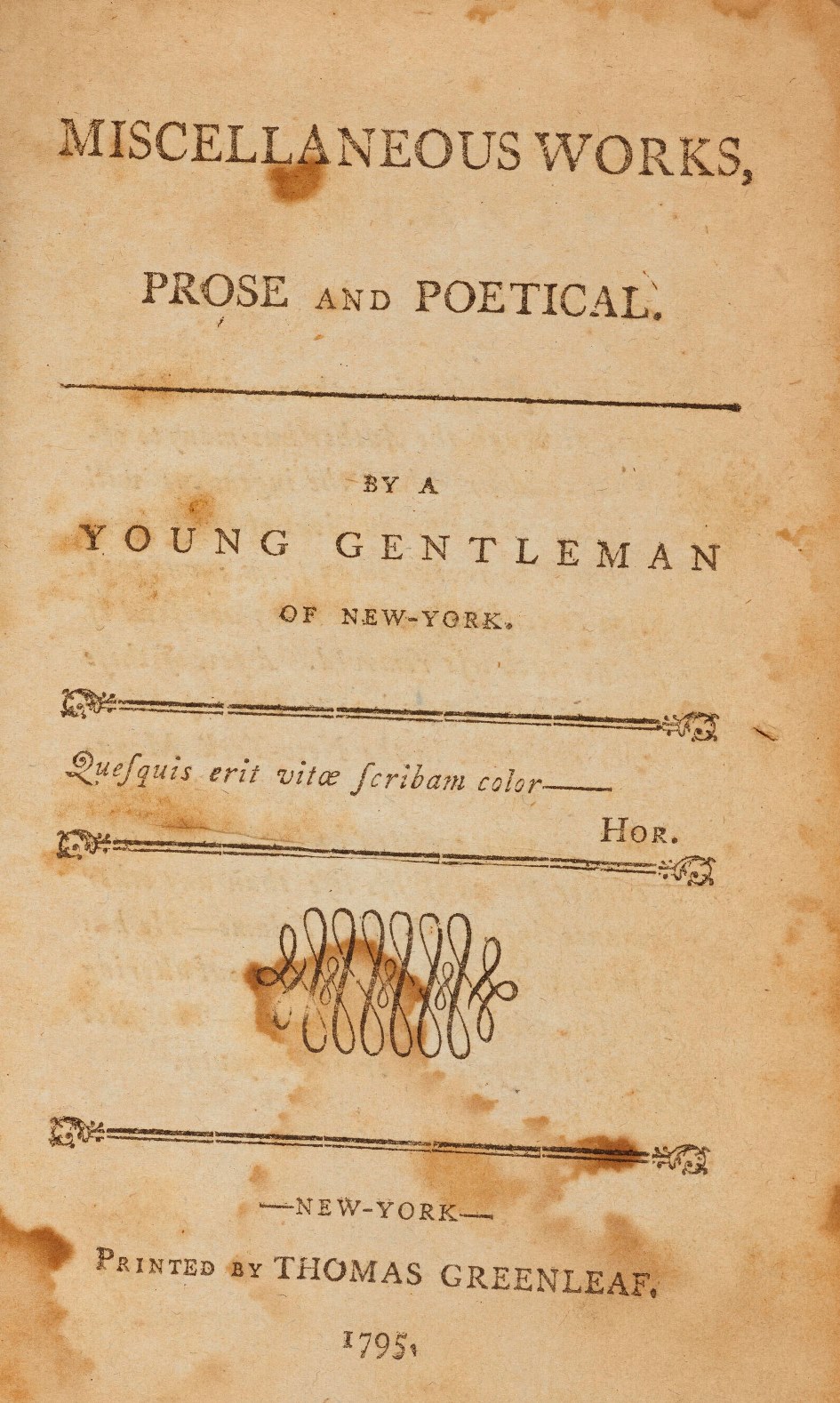
John Blair Linn is an American priest and poet.
Linn graduated from Columbia College and later became a priest. While in college, he published in magazines and newspapers, later writing a play and several collections of poetry and prose.
